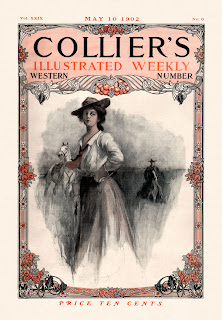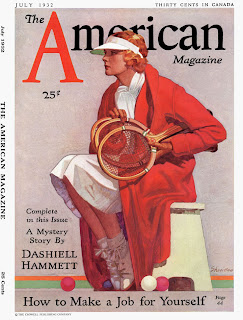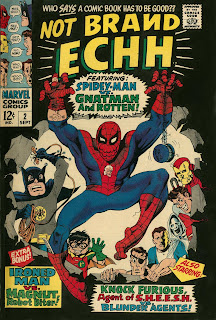
DC Comics, like most of the comic book industry, owed a great deal of its early success to superheroes. But the long underwear guys were falling out of public favor by the mid-1940s, and DC, which had pioneered in that genre, was, like most other comics publishers, trying various types of comics, hoping for something to replace the costumed characters with. They brought out two new funny animal anthologies in the early part of 1946. Nutsy Squirrel starred in one of them. The other, Animal Antics (first issue dated March-April of that year) introduced The Raccoon Kids.The kids started out in the back pages, with the cover and lead story featuring a rabbit prestidigitator named Presto Pete. The Raccoons replaced Pete for one issue in #3 (July), then took over the cover and lead spot permanently, starting with #6 (January, 1947). The artist who handled them, not just at first but almost exclusively throughout their run, was Otto Feuer (The Dodo & the Frog). The writing credit is less certain, but they're believed to have been co-created by Sy Reit (Casper the Friendly Ghost). The same team (definitely Feuer on the art, probably Reit on the script) was also responsible for Peter Porkchops.Rudy and Rollo Raccoon were typical boys, only raccoons instead of humans, about 8 years old. They were twins, like Heckle & Jeckle or Dover & Clover, but few if any story points were made of their twinhood. They didn't even dress alike. In early stories, their nemesis was Uncle Percy, who frequently played mean tricks on them — but of course, they always managed to avenge themselves with even meaner tricks of their own. Tho supposedly related, Percy didn't look like a raccoon. Maybe he was a short-haired weasel. Later, Percy was dropped from the cast, and the stars were played against a guy closer to their own age, named Muggsy Mole.From the late 1940s to the mid '50s, the DC funny animal anthologies all seemed to follow a similar arc. First, most modified their titles to suggest (without outright claiming) a connection to theatrical animation. Animal Antics became Movietown's Animal Antics with its 24th issue (February, 1950). Then all were re-titled after their lead features. Movietown's Animal Antics became Raccoon Kids with its 52nd issue (October, 1954).Then they all began faltering. Raccoon Kids was published only a couple of times in 1957. Then they all ended. The last issue was #64 (November of that year).After that, it's been as close to oblivion for them as most DC characters ever get. Like the majority of DC's funny animals, the Raccoon Kids appeared in the Funny Stuff Stocking Stuffer special (1985). That, and sporadic reprints are about the extent of their post-series existence.
DOWNLOAD:
http://rapidshare.com/files/91803648/Raccoon_Kids_052.cbr
http://rapidshare.com/files/91805493/Raccoon_Kids_053.cbr
http://rapidshare.com/files/91806907/Raccoon_Kids_054.cbz
http://rapidshare.com/files/91808510/Raccoon_Kids_057.cbr
http://rapidshare.com/files/91809856/Raccoon_Kids_058.cbz
http://rapidshare.com/files/91811252/Raccoon_Kids_059.cbz
http://rapidshare.com/files/91812609/Raccoon_Kids_060.cbz
http://rapidshare.com/files/91813820/Raccoon_Kids_062.cbr
http://rapidshare.com/files/91815112/Raccoon_Kids_063.cbz
http://rapidshare.com/files/91816638/Raccoon_Kids_064.cbr
 The Comics Journal, often abbreviated TCJ, is a US magazine of news and criticism pertaining to comic books and strips. It is known for lengthy interviews with comic creators and for sometimes scathing editorials and reviews, particularly with regard to the "mainstream" comics industry and its superhero-heavy products. The magazine promotes the view that comics are a fine art deserving of broader cultural respect, and thus should be evaluated with higher critical standards.
The Comics Journal, often abbreviated TCJ, is a US magazine of news and criticism pertaining to comic books and strips. It is known for lengthy interviews with comic creators and for sometimes scathing editorials and reviews, particularly with regard to the "mainstream" comics industry and its superhero-heavy products. The magazine promotes the view that comics are a fine art deserving of broader cultural respect, and thus should be evaluated with higher critical standards.
 8:14 AM
8:14 AM
 East Shack Net
East Shack Net
























